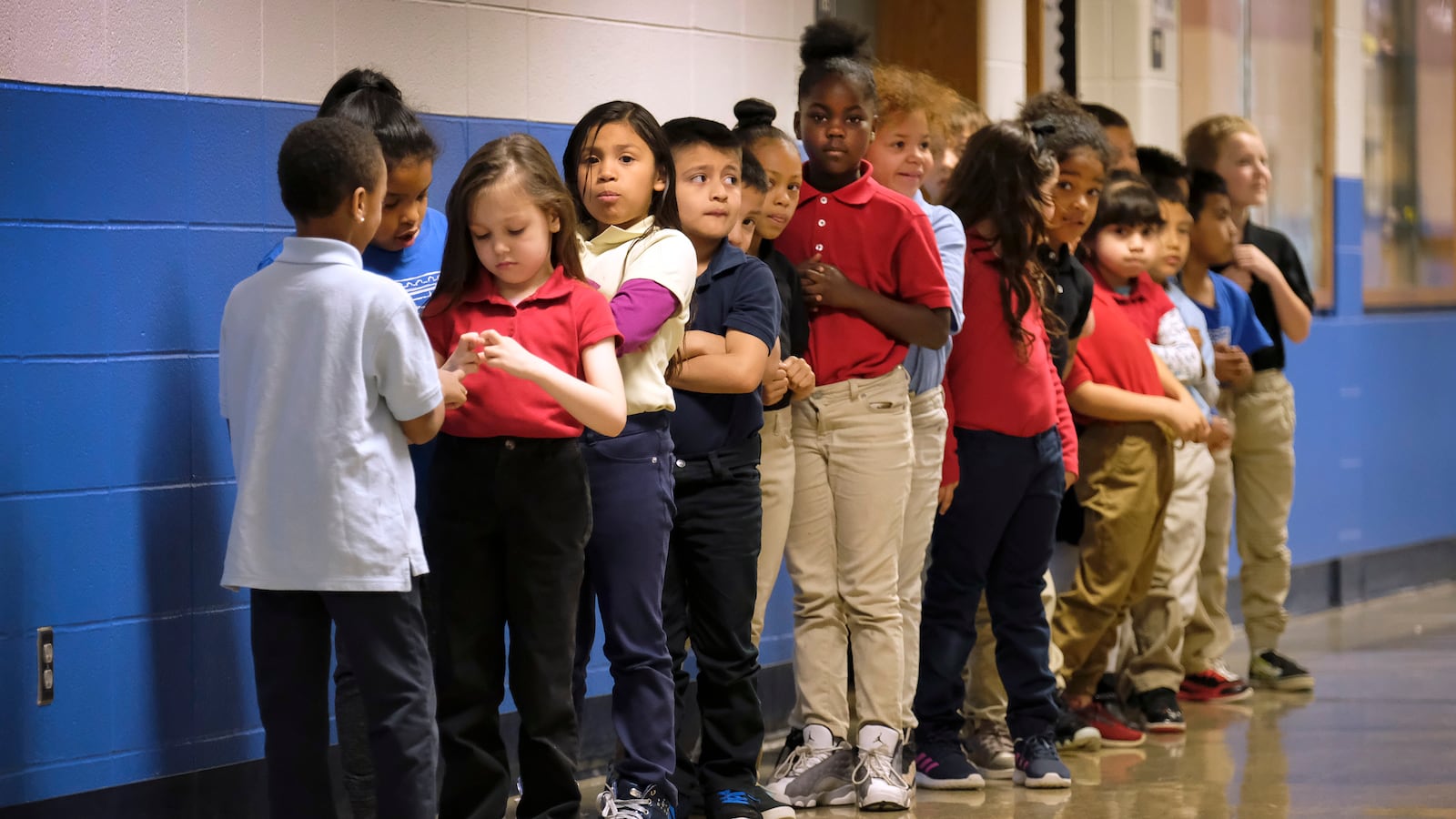Indianapolis Public Schools is already growing its roster of so-called innovation schools for next school year, and the school board will likely make several decisions on whether to add more independently managed campuses in the coming weeks. These choices could have an enduring impact on the shape of the district.
In the five years since the network began, it has grown at a rapid clip, and more than one in four Indianapolis Public Schools students now attend an innovation school. But many local parents and educators still don’t fully understand what defines an innovation school, in part because the term covers schools that are so different.
The district’s 20 innovation schools share a few commonalities: They have substantially more freedom from central office edicts, so they can choose their approach to academics, discipline, and staffing. Teachers in the schools work directly for the outside managers, and they are not represented by the district union. And because the relationships between the district and the school managers are enshrined in contracts, the schools would have some stability were the tide to shift and Indianapolis Public Schools leaders to become less supportive of the approach.
Innovation schools, which were created by the state legislature, allow districts to get credit for the academic performance and enrollment at independently run schools, while the campuses gain access to buildings and services. The unique partnership between the district and charter schools has drawn national attention to Indianapolis. Still, many of the city’s charter schools remain outside the innovation network, and not all innovation schools have charters.
As the Indianapolis Public Schools board prepares to consider new potential innovation schools, we have a primer on the many types of schools that are considered part of the network.
Some innovation schools do not have charters. While the majority of schools in the network also have charters from either the mayor’s office or the state charter school board, several schools are managed by nonprofits without charters. Those are typically campuses that used to be district neighborhood schools or magnet schools — and include Edison School for the Arts, Cold Spring, and the Super School. Many of these campuses are called “conversion” schools because the principals chose to pursue innovation status.
Campuses without charters have a much closer relationship to the district. For example, Indianapolis Public Schools has more legal responsibility at those schools, where it usually provides special education services. They are also primarily funded through the same model as other schools in the district, which aims to provide money based on student needs.
Innovation schools without charters depend on the district for legal authority to operate, and if the school board were to cut off support, the managers would not be able to continue running the schools. That’s what happened to Emma Donnan Elementary School when the board voted to end its contract last year.
The district is leaning on the model to improve its lowest-performing schools. From the start, the innovation schools that have gotten the most attention are so-called “restart” schools, which are campuses with low scores on state tests that Indianapolis Public Schools overhauls by handing them to charter operators. The new managers typically replace the principal, teachers, and other staff.
Since the program began, six schools have been restarted. Those campuses typically have charters, but they still receive some services from the district, such as transportation. Some of the schools have notably improved test results, while others have continued to struggle.
This year, there will be a new hybrid. For the first time, Indianapolis Public Schools has added a category of schools that they believe could use innovation status to improve results — without replacing the principal and teachers. They would be called “jumpstart” schools, and the innovation conversion would be initiated by the school leader. But while conversion schools are typically campuses that have relatively high performance, jumpstart is designed for schools that are struggling before they become innovation schools. The label is new, but it’s pretty similar to what happened at the Thomas Gregg Neighborhood School, a struggling campus that chose to become an innovation school in 2017 with the support of nearby neighborhood groups.
Innovation schools with charters may still have strong ties to the district. KIPP Indy opened as a charter years before there was an innovation network. But the charter network was among the first schools to join forces with the district five years ago, and the ties have grown stronger. It is one of several innovation schools that occupy Indianapolis Public Schools buildings and depend on the district for some services, such as transportation.
If Indianapolis Public Schools pulled back from the strategy, innovation schools in district buildings could be in a tight spot. But those with charters would have a chance at finding new locations.
A few innovation schools are almost entirely independent from the district. Since opening as an innovation school in 2016, Purdue Polytechnic High School has maintained a relationship with the district and connection to middle school students from diverse backgrounds. But the school is not in an Indianapolis Public Schools building, and it does not receive transportation from the district.
That puts Purdue, and other independently run schools, in a strong position when it comes to its relationship with the district because if the school or district ended the innovation agreement, it would have a modest impact on school operations. That independence was on full display two years ago, when the district and Purdue Polytechnic went toe-to-toe over control of the former Broad Ripple High School building.

